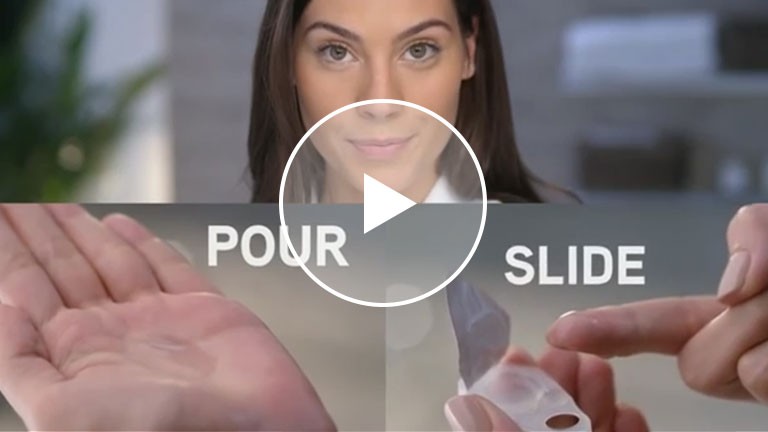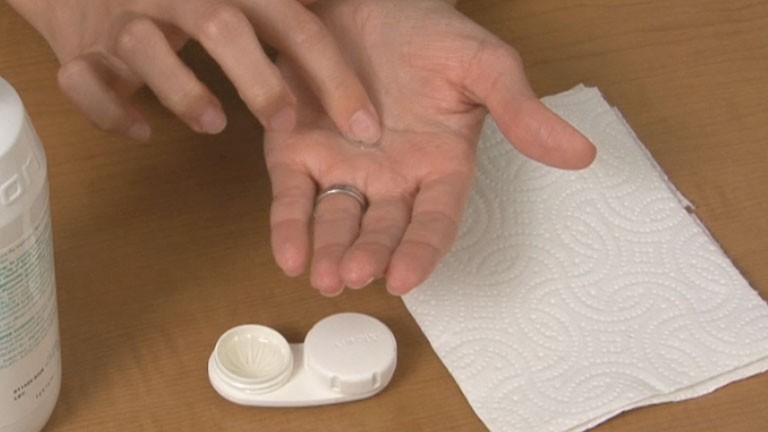Patient Education
Frame Gallery
- Details
- Written by Harbor View Eye Care Team

- Putting your contact lenses in is easier than you think. Watch this short video to learn the proper way to apply your DAILIES® AquaComfort Plus® contact lenses, designed for a full day of refreshing comfort. In a few minutes, you'll be on your way, looking and feeling great with your DAILIES® AquaComfort Plus® contact lenses. Remember, it takes a couple of days to get used to putting in, wearing, and taking out your contact lenses. - Follow these easy steps to put in your contact lenses: first, wash and dry your hands with a clean towel. Open the contact lens pack and either pour the lens into the palm of your hand, or slide it out with your index finger. Check your contact lens: if it's shaped like a bowl, perfectly round on the edge, you're ready to put in your contact lens. If the edge is flared, flip it over. Using your free hand, pull your eyelid up gently. With the middle finger on the hand with the contact lens, pull down on your bottom eyelid. Then, with your contact lens on the tip of your index finger, gently slide the contact onto the center of your eye. Let go of your eyelid and blink once or twice. Repeat with your other eye and you're all set! Enjoy the all-day comfort of your DAILIES® AquaComfort Plus® contact lenses. Tonight, before bed, be sure to check out how to take out your contacts. - For more information on using contact lenses, talk with your eye care professional and visit www.dailies.com for more information on DAILIES® AquaComfort Plus® contact lenses and other Alcon products.
©2014 Novartis
- Details
- Written by Harbor View Eye Care Team

CHEERS to your ocular health.
Did you know that nutrition plays a vital role in your ocular health?
Cardiologists stress lean meats, red wine, and exercise for your heart health. But what about your eyes? Well, studies show there are distinct food groups that show extreme benefit to the well being of your vision.
Lutein, found in green leafy vegetables such as kale, spinach, and broccoli create an added insulation in your retina against macular degeneration. Yellow vegetables and fruit (squash, yellow watermelon) as well as Omega III supplements (fish oil or flax seed oil) also help boost the pigment cells in the macula to promote crisp vision. As a side note, it is best to purchase molecularly distilled fish oil, and take the pills at night to prevent unwanted GI effects or “fish burp” which occurs with less expensive, non distilled fish oils. Remember, not all fish oil pills are created equally.
What about preventing cataracts you ask? Well, studies have shown that vitamin C found in citrus fruits such as oranges, lemons, grapefruit, and kiwi can slow down cataract formation. Cutting your UV exposure by wearing sunglasses with UV-A and UV-B protection will also help, as well as smoking cessation. You see, cataracts are a clouding of the natural lens of the eye that causes symptoms such as dim vision, glare at night, decreased focusing, and blurred vision.
Macular Degeneration is a condition of the retina in the back of the eye that causes symptoms of loosing the fine detail vision we have been used to, replacing it with a central scotomas or blind spots. Your central vision gets destroyed by this disease. Macular Degeneration is an inherited disease, as well as some cataract formations, so check your family history to see if you are at greater risk.
It behooves you to be aware of these conditions that affect millions of people worldwide, and do your best to incorporate preventative care such as good nutrition, regular check ups with your eye care practitioner, and preventing sun exposure as well as not smoking. Additionally, cooked food devalues the precious live enzymes, so these foods are best eaten raw.
Remember, you can play a vital role in your ocular health. After all, remember Hippocrates, the father of medicine, who said: "Let your food be your medicine and your medicine be your food".
And lastly if you don’t have time to eat all those fruits and vegetables in a day consider a fruit or vegetable smoothie and then drink to your good ocular health!
The content of this blog cannot be reproduced or duplicated without the express written consent of Eye IQ.
- Details
- Written by Harbor View Eye Care Team

Costa Sunglasses: Beyond Polarized Where Glare Goes To Die. Most polarized lenses eliminate glare by blocking reflected light. But Costa's patented 580 lenses go farther, blocking perfect amounts of harsh yellow light while enhancing reds, blues and greens.
The result: less haze, less blur, greater contrast and greater clarity. Available in glass (580G), or a lightweight, impact-resistant plastic (580P), it's like seeing in high definition.
- Details
- Written by Harbor View Eye Care Team

Contact lenses are a popular solution for people who need vision correction. However, you need an extensive eye examination to determine what type of contacts will work best for you. Once you receive your contacts it is important to follow proper steps to ensure that your contacts are clear, clean, moist and undamaged.
It is important to develop a routine when preparing and inserting your contacts. First, wash your hands with soap and water and dry them on a lint free towel. Next, rinse your contact lens with the proper solution to make sure it is clean and free of dust. Then, making sure that your finger is dry, place the lens on the tip of your finger and check to see if the lens is inside out.
The lens should appear to have a U shape. If it is a U shape with the top edges flared out, the lens is inside out. If you do apply the lens inside out it will be uncomfortable, but will not cause any damage.
Once the lens is on the tip of your finger properly you are ready to insert it.
- Details
- Written by Harbor View Eye Care Team
[unable to retrieve full-text content]
Alcon Scientist discusses DAILIES TOTAL1















